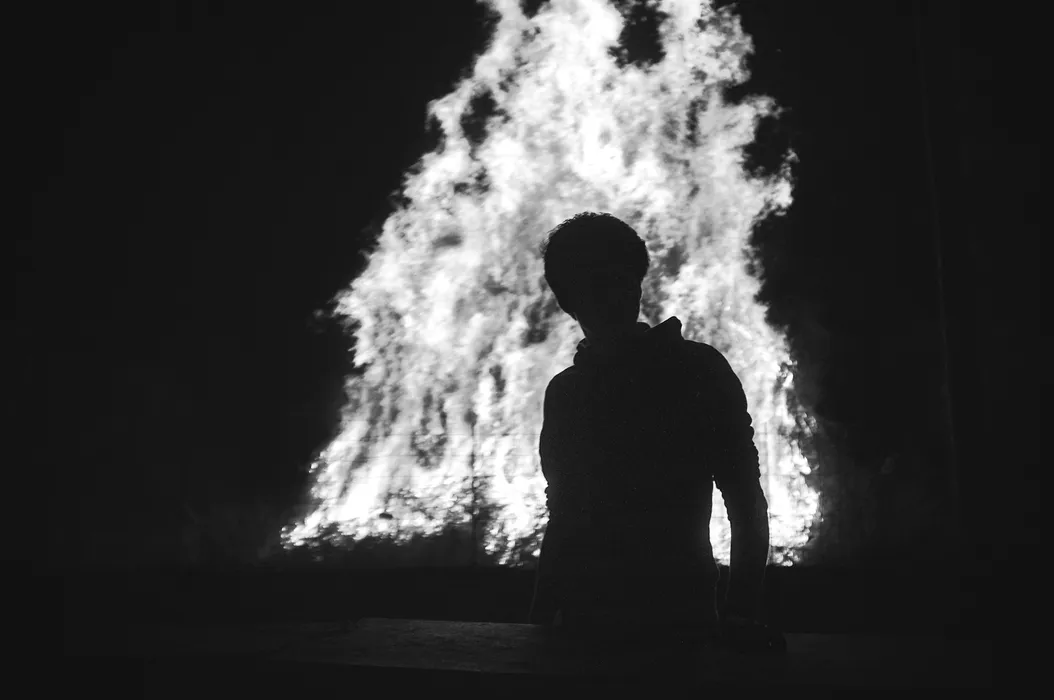Serbia’s students recently built one of Europe’s largest protest movements. But you probably haven’t heard much about it.
Last November, in Novi Sad, Serbia’s second-largest city, a newly renovated train station canopy collapsed. It killed 15 people, including children (later rising to 16).
Investigations soon revealed the cause: widespread corruption and negligence. Politicians had ignored warnings about the dangerous construction — just to pose for the cameras at its opening. “We’d all heard that corruption kills,” Serbian activist Nina Petrov told me in a recent interview, “but this time we saw it clearly.”
Instead of the usual angry demonstrations, students took an unusual first step: a silent memorial at exactly 11:52 AM every day — the time of the tragedy. These 15-minute vigils quickly became a powerful ritual, spreading nationwide.

Then came the regime’s mistake: violence. “The first blockade started because regime-linked thugs attacked students during our silent protests,” Nina explained. “Everything was recorded. Once those men were identified, the students decided to block their universities. Then it spread [to] every campus, even private ones.”
That violence — and another shocking incident where a student protester was run over by a car — sparked outrage, bringing more people onto the streets. Within weeks, a quiet memorial had grown into Serbia’s largest protest in decades, forcing high-profile resignations and shaking the foundations of Aleksandar Vučić’s authoritarian regime.
So, how exactly did they build and sustain this momentum? Here’s Nina’s explanation of their key tactics, edited for clarity:
Put the hive mind to work
Serbia’s students reject the usual leader-focused model. Instead, they run open, direct-democracy sessions called plenums. Moderators help run the sessions, but everyone can speak; everyone has equal power.
“We have local plenums at each university faculty,” Nina said. “Then there’s a roof structure where delegates share decisions from their plenums. Delegates don’t debate or decide alone—they just represent.”
This keeps their movement united and disciplined. And it’s intentionally slow: “Taking our time helps us avoid knee-jerk reactions.”
Even the structure itself isn’t fixed. Nina told me, “No rule is set in stone. If there’s a need for a better model, we’ll invent one.”
Still, it’s not rigid. Some workgroups, like media, act independently. For example, she explained, “Our media team runs the student blockade account without asking permission for every post.”
Play the future, not the present
The movement quickly grew bigger than just opposing Vučić. They realised early on that removing one corrupt leader isn’t enough.
“This isn’t just about Vučić,” Nina said. “We’re protesting to build a new system that won’t allow this scale of corruption again. We’ve archived everything we’ve done — how we made decisions, organised logistics, built support — so others can replicate it. We want everyone, from communities to factory workers, to learn this model.”
“I hope this becomes the new culture in Serbia,” she added. “Not just voting on election day, but being active citizens every day.”

Get specific. Stay accountable.
Movements succeed when demands are specific, measurable, and verifiable. The Serbian students identified four concrete goals from the start, tracked carefully by experts.
“These four demands have stayed the same from the beginning,” said Nina. We have workgroups checking progress constantly, deciding exactly what it takes for each demand to be fulfilled.”
Escalate with care
They didn’t jump immediately to mass marches. First came the silent vigils: simple, moving, and easy to join, these actions helped keep the victims – and the corruption that led to their deaths – top of mind.
Then, 24-hour roadblocks. Each step tested and built public resolve.
“We always took it one step further,” Nina said. “We’d propose something bigger, then wait to see if people followed. And they did.”

Let violence backfire (and stay disciplined)
When the regime responded with brutality, the students stayed nonviolent — and carefully documented everything.
“After every big protest, we clean the streets,” Nina said. “We don’t fight the police. It’s not their fault; they’re part of the same broken system. This discipline makes the regime’s violence backfire.”
Grow your coalition
Real power comes from uniting diverse societal groups behind common goals. The students didn’t stay isolated. They consciously reached out to farmers, teachers, taxi drivers, even bikers. They brought everyone into the fight, no matter their background.
“Every student protest is led by students, but we coordinate with everyone—farmers, teachers, bikers,” Nina said. “And we actively support their struggles, too.”
Importantly, they didn’t judge Vučić’s supporters: “In some villages, people are still paid to attend his rallies. Many are just surviving; some are blackmailed. We never judge.”
They also refused distractions. “We’re provoked daily, but we don’t waste time answering every accusation from Vučić. We focus on our message instead—mainly through Instagram, because that’s where everyone is.”

Building something new
These students aren’t just fighting corruption. They’re actively creating an alternative, something every activist worldwide can learn from.
“We’re not claiming it’s a blueprint,” said Nina. “It’s a case study. It works for us. Maybe it can work for others.”



